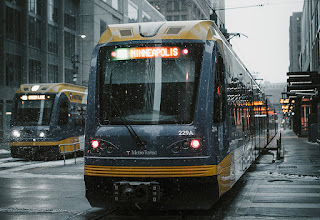21. Motor Lifeboat (MLB):
The Motor Lifeboat (MLB) is the standard lifeboat of the United States Coast Guard (USCG). The Motor Lifeboat (MLB) is designed to weather hurricane force winds and heavy seas, capable of surviving winds up to 60 knots (110 km/h), breaking surf up to 6 m (20 ft) and impacts up to three G's. If the boat should capsize, it self-rights in less than ten seconds with all equipment fully functional. The boat's hull and superstructure are constructed entirely from 5456 marine grade aluminum. Designed with a hard chined deep "V" planing hull, the MLB exceeds its hull speed. The frame is composed of 17 vertical bulkhead frames, each of which is welded to the deck and hull, and five of which are watertight. More details
22. How Feller Buncher Works:
23. How Jet Ski Works:
A feller buncher is a type of harvester used in logging. It is a motorized vehicle with an attachment that can rapidly gather and cut a tree before felling it. Feller is a traditional name for someone who cuts down trees, and bunching is the skidding and assembly of two or more trees. A feller buncher performs both of these harvesting functions and consists of a standard heavy equipment base with a tree-grabbing device furnished with a chain-saw, circular saw or a shear—a pinching device designed to cut small trees off at the base. The machine then places the cut tree on a stack suitable for a skidder, forwarder, or yarder for transport to further processing such as delimbing, bucking, loading, or chipping. More details
Jet Ski is the brand name of a personal water craft (PWC) manufactured by Kawasaki, a Japanese company. The term is often used generically to refer to any type of personal watercraft used mainly for recreation, and it is also used as a verb to describe the use of any type of PWC. A runabout style PWC typically carries 1–3 people seated in a configuration like a typical bicycle or motorcycle. "Jet Ski" is a proper noun and registered trademark of Kawasaki. The stand-up Kawasaki Jet Ski was the first "commercially successful" personal watercraft in America, having been released in 1972. The Kawasaki Jet Ski was the only commercial successful PWC for almost 16 years. More details
24. How Loom Works:
A loom is a device used to weave cloth and tapestry. The basic purpose of any loom is to hold the warp threads under tension to facilitate the interweaving of the weft threads. The precise shape of the loom and its mechanics may vary, but the basic function is the same. Weaving is done by intersecting the longitudinal threads, the warp, i.e. "that which is thrown across", with the transverse threads, the weft, i.e. "that which is woven". The major components of the loom are the warp beam, heddles, harnesses or shafts (as few as two, four is common, sixteen not unheard of), shuttle, reed and takeup roll. In the loom, yarn processing includes shedding, picking, battening and taking-up operations. More details
25. How Tram Works:
A tram (streetcar or trolley) is a rail vehicle that runs on tramway tracks along public urban streets; some include segments of segregated right-of-way. The lines or networks operated by tramcars as public transport are called tramways or simple tram. Historically the terms electric street railways and trolley (not meaning trolleybus) was also used in the United States. In the United States, the term tram has sometimes been used for rubber-tired trackless trains, which are unrelated to other kinds of trams. Tram vehicles are usually lighter and shorter than main line and rapid transit trains. Today, most trams use electrical power, usually fed by a pantograph sliding on an overhead line. More details
26. How Ferry Works:
A ferry is a merchant vessel used to carry passengers, and sometimes vehicles and cargo, across a body of water. A passenger ferry with many stops, such as in Venice, Italy, is sometimes called a water bus or water taxi. Ferries form a part of the public transport systems of many waterside cities and islands, allowing direct transit between points at a capital cost much lower than bridges or tunnels. Ship connections of much larger distances (such as over long distances in water bodies like the Mediterranean Sea) may also be called ferry services, especially if they carry vehicles. More details
27. How Rally Car Works:
Rally is a form of motorsport that takes place on public or private roads with modified production or specially built road-legal cars. It is distinguished by not running on a circuit, but instead in a point-to-point format in which participants and their co-drivers drive between set control points (special stages), leaving at regular intervals from one or more start points. Rallies may be won by pure speed within the stages or alternatively by driving to a predetermined ideal journey time within the stages. The term "rally", as a branch of motorsport, probably dates from the first Monte Carlo Rally of January 1911. Until the late 1920s, few if any other events used the term. More details







